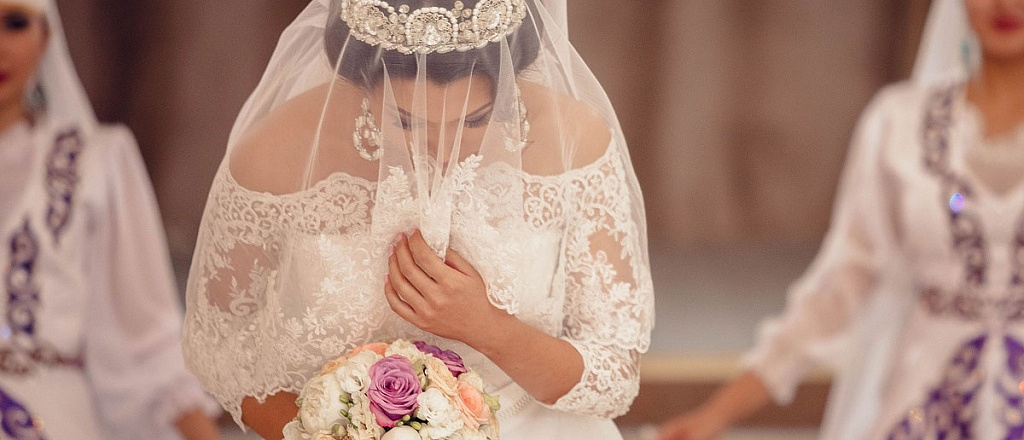Creating a family and wedding considered one of the important moments in the life of two young people. Kazakhstan has rich and long history that constituted the country as being multinational and multi-religious.
In the past, cradle-betrothal was a common practice — when parents arrange the marriage of the children right after their birth. Abduction with or without bride’s agreement also existed. Moreover, due to military activities and hard life conditions of the nomadic lifestyle, men had low life expectancy. That is why the levirate custom existed, where the brother marries and inherits his deceased brothers’ wife and children, as well as another custom, where the husband marries deceased wife’s younger sister. An Islam paradigm also allowed having up to four wives if the man was prosperous enough to take care of all of his wives and children.
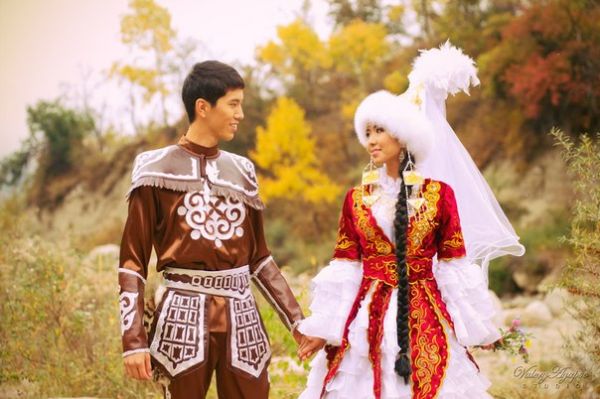
Nowadays, these traditions are history, and marriages are more Western style, where the groom wears a suit and the bride is dressed in a white wedding dress, with all the guests wearing suits and evening dresses. However, there are still some procedures and customs worth mention.
Wedding process divided to several stages:
Matchmaking (Kuda tusu) is the most interesting and unusual of all pre-wedding traditions. Groom’s father and the honorable relatives go to the bride’s home. Generous and holiday table is served, everybody talk about different themes and complement friendly atmosphere by jokes. Later the main theme — kalym is discussed (price for a bride). Groom’s parents give money to buy furniture and bride’s parents must buy bedding, dishes, utensils, etc.
Historically, the engagement is when groom’s parents ask for permission and approval about the marriage of their children from bride’s parents. The “Kalyn”, along with presents, are designed to please the bride’s party in order to get their approval.
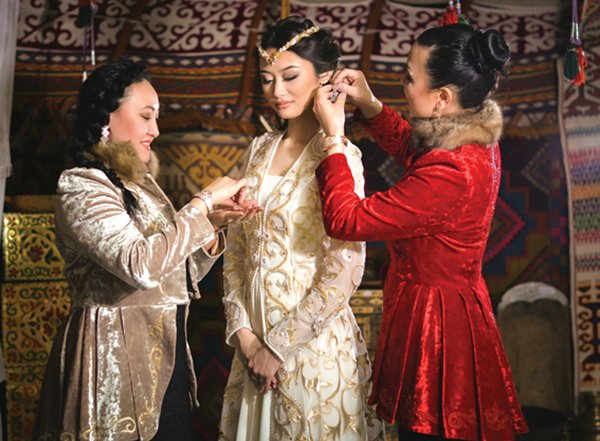
Kyz uzatu — farewell with girl. Indicates the moment when bride leaves the parents’ home and starts new life with her husband.Usually it is feasting with some good food and drinks, and at the end of which groom takes the bride to his home before 12 a.m.
Neke Kiyar — wedding ceremony. A cup of water is put before Mullah, covered with a handkerchief. Mullah in mosque reads prayers, and then he asks in the presence of the witnesses about agreement of groom and bride to marry. There are only closest relatives of the groom and bride in this ceremony.
At the evening around 6-7 p.m., the cortege arrives to the rented restaurant where the rest guests are. Here they make “betashar” for the guests.
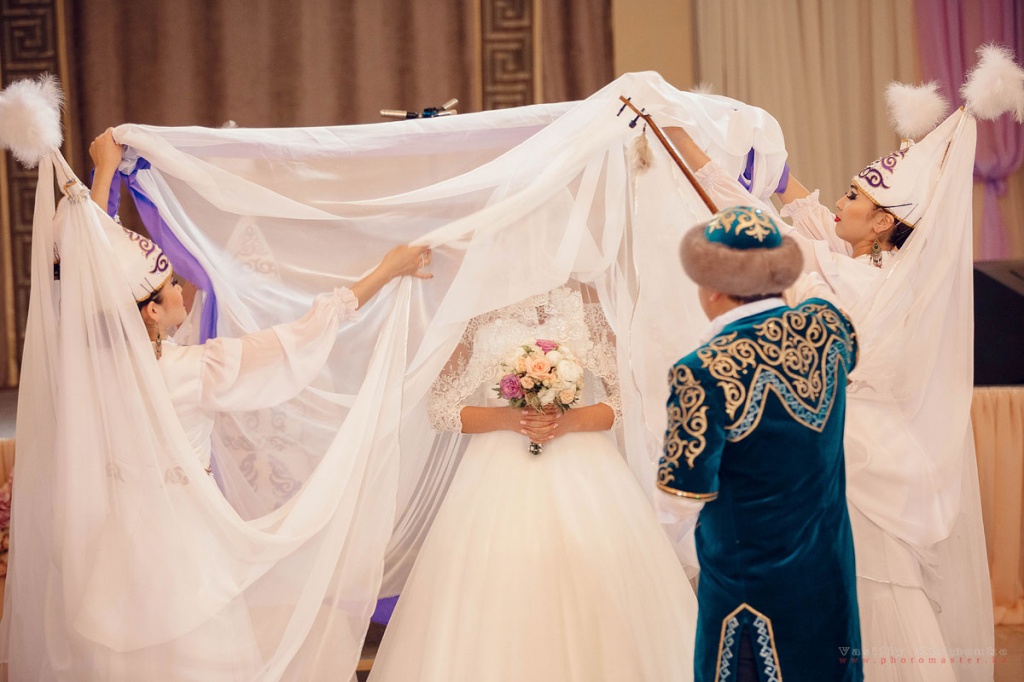
Betashar — the ceremony of opening bride’s face. It is usually accompanied by traditional song “zharzhar”. Here the husband’s relatives congratulate and give good advices for a happy family life.During this part of the wedding, the couple listens to wishes and congratulations from the guests. Theguestsplayvarious games and have competitions in dancing, singing.
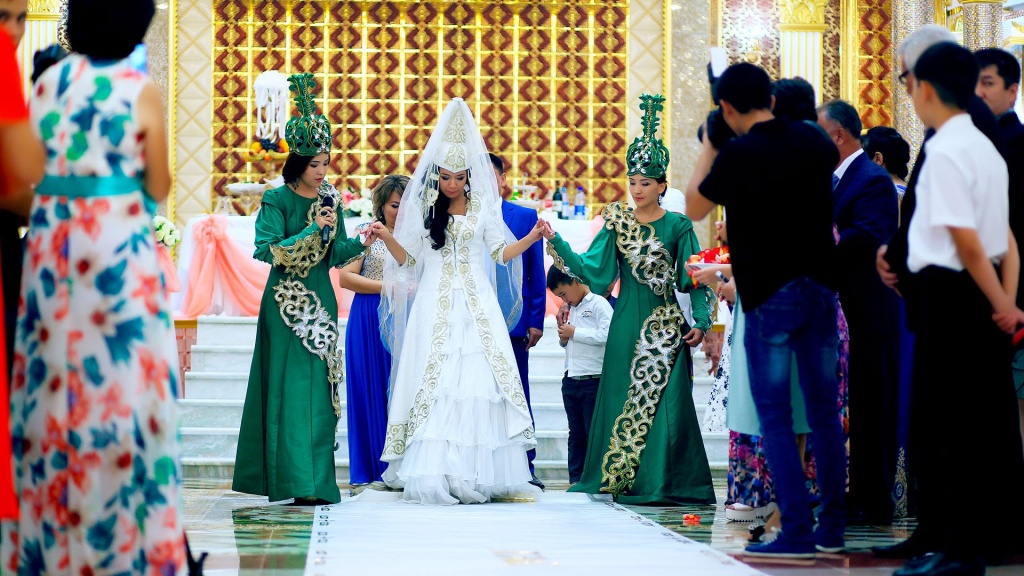
Koshtasu — farewell to a home. Girl says goodbye to her parents and relatives before she leaves the house. According to the traditions, a girl will not be able to come home for a year so that to get used to a new family.
Kelin tusiru — the arrival of the bride to the groom’s house. The whole village is prepared for this celebration. By tradition, a bride is not brought to the house at once. Other girls see her off to the house without permitting her open her face. Then all relatives and friends are gathered so that to organize a feast with treats. Everyone wants to see the future bride. Only after all relatives are gathered, the bride is solemnly appeared.
After the couple is husband and wife, they live two weeks with the husband’s parents. The young wife wears kerchief during these two weeks. After two weeks, the newlyweds leave to their own place, that is, if the husband is not the youngest son at home. Otherwise, they stay with husband’s parents. Due to coupled weddings, girls usually have also two dresses, one for each ceremony. The most beautiful and festive dress is for the general wedding. The number of guests vary from 100-150 for small weddings, to 500-600 persons.


